Victims of sexual harassment are often left feeling helpless.
But after Marie Constance Tan experienced a man's extended stare — also whipping out his phone to aim it at her at one point — she learnt not only to stand up to her harasser, but also the resources available to deal with such situations.
This is her Facebook post sharing these avenues, and detailing what happened (summary below):
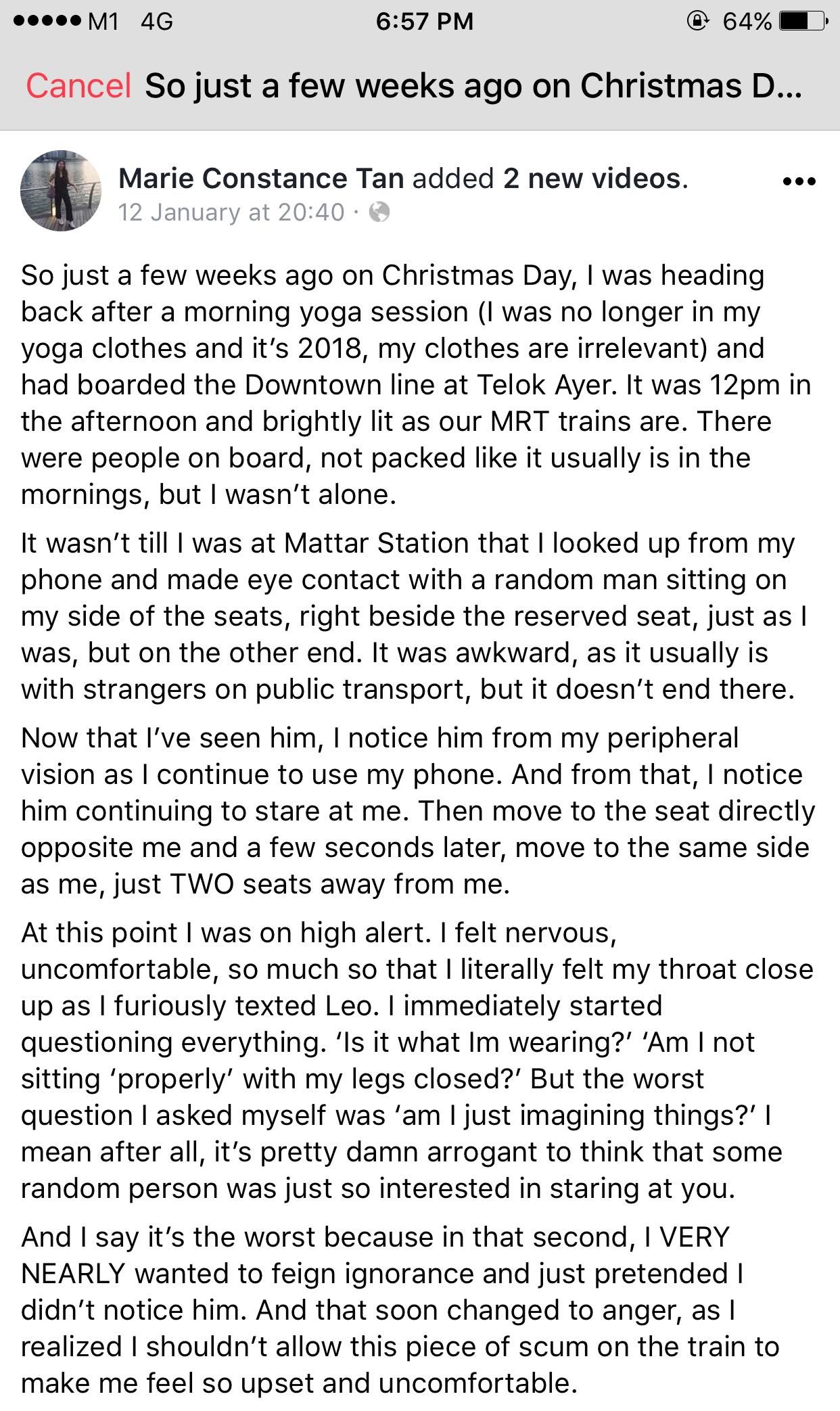
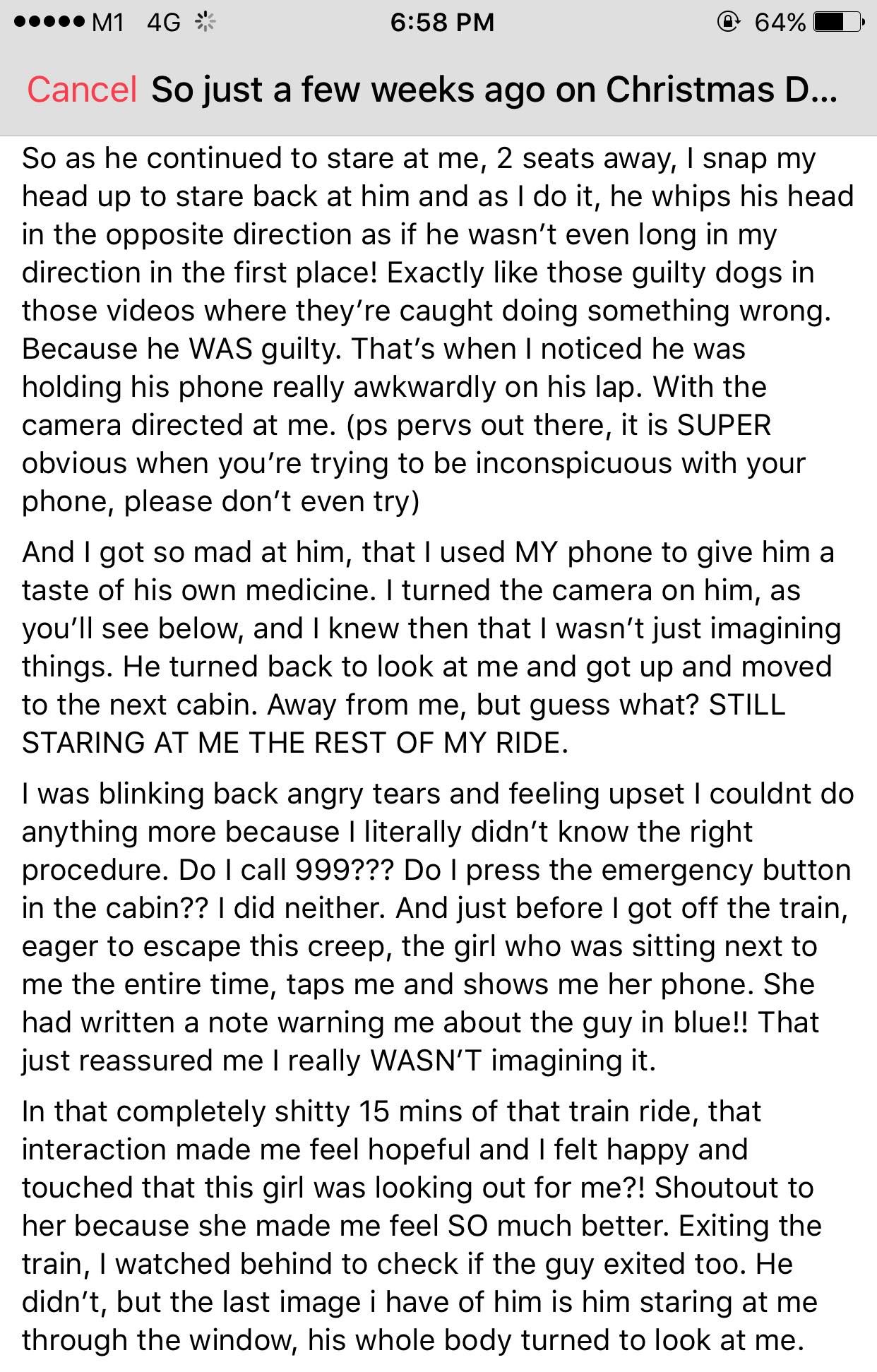
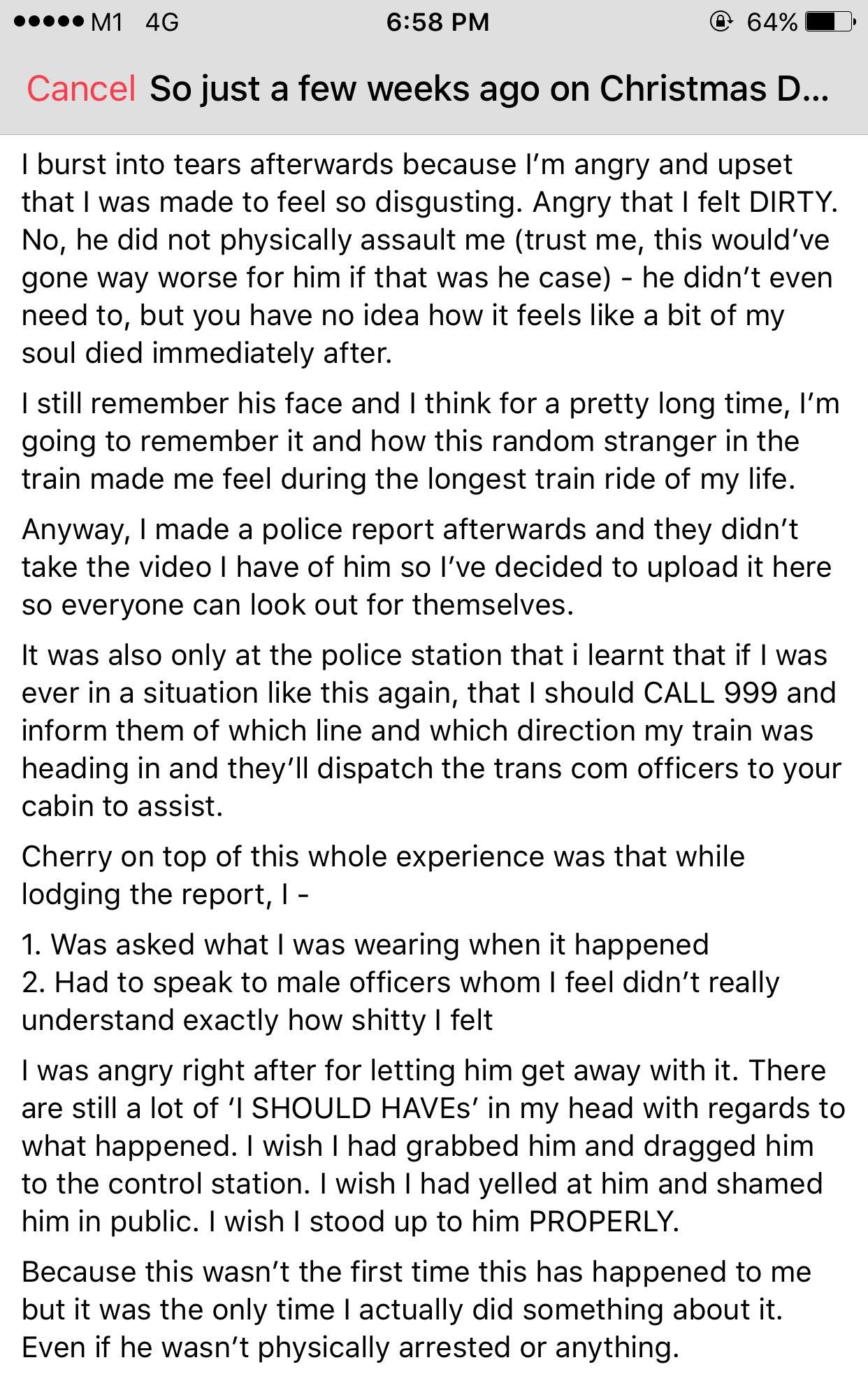
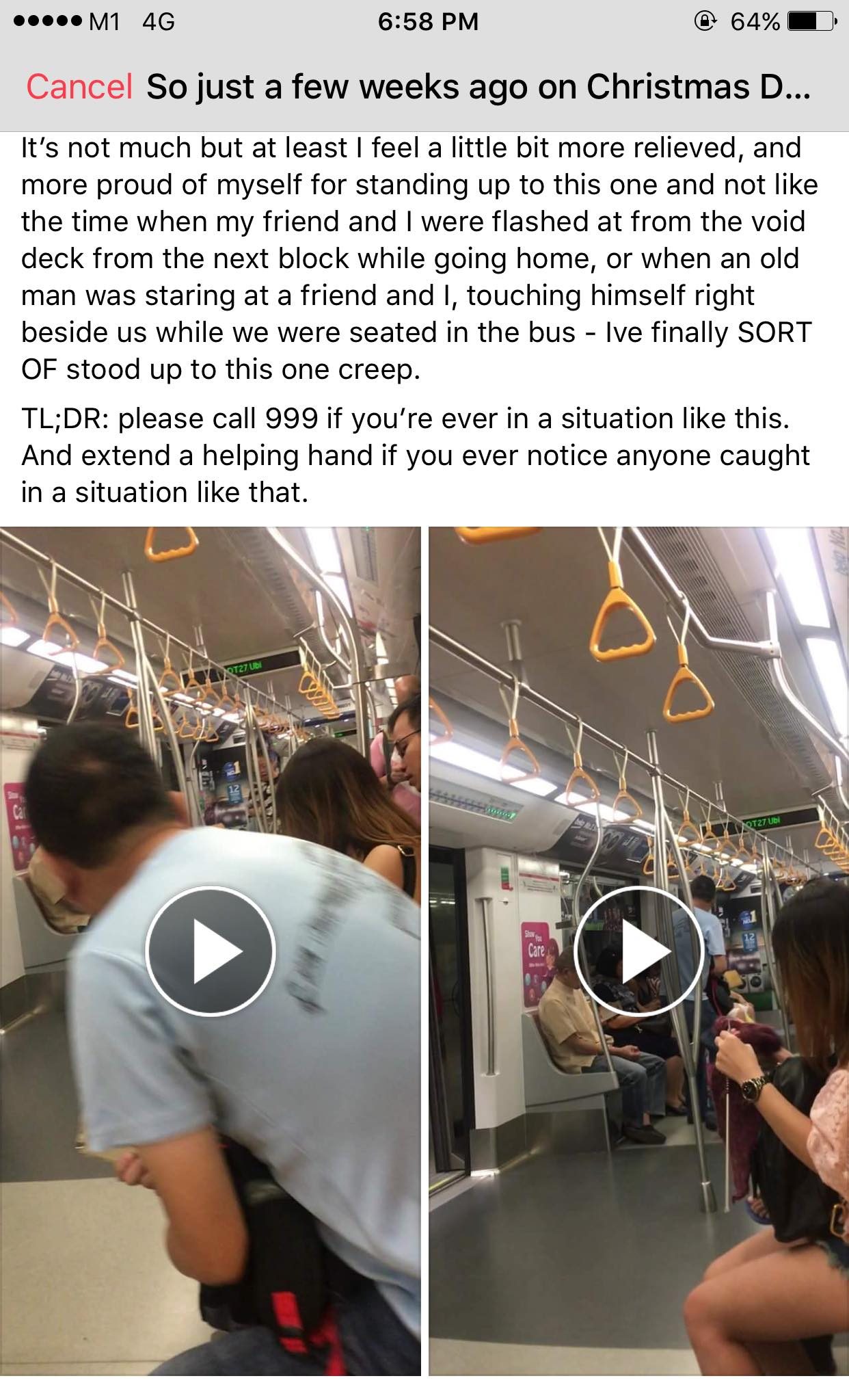
Changed seats to be near her
It was 12pm on Christmas Day when Tan boarded a train on the Downtown Line.
Seven stops later, at Mattar Station, Tan said she realised something was amiss.
- A man was sitting on the same row of seats as her, but on the opposite end.
- Out of her peripheral vision, she noticed him staring at her.
- He shifted to sit directly opposite her.
- Even though she didn't move — not that this should matter — he shifted again, a few seconds later, to sit on the same row as Tan again, but only two seats away this time.
At this point, Tan writes:
"At this point I was on high alert. I felt nervous, uncomfortable, so much so that I literally felt my throat close up as I furiously texted Leo."
Phone in awkward position on lap
Tan even asked herself if she was "just imagining things" — as many victims of sexual harassment do, for fear of coming across as presumptuous or arrogant.
[related_story]
But her doubt soon changed to anger, realising she was letting the staring man make her feel upset and uncomfortable.
This was what happened next:
- Tan stared right back at him.
- The harasser whipped his head in the opposite direction immediately, to act as if he wasn't staring at her.
- Tan noticed the phone held awkwardly in his lap, with the camera lens directed at her.
- Tan took out her own phone to film the man, who looked back at her before moving to the next cabin — where believe it or not, he continued to stare at her for the rest of her ride.


And Tan did not know what else she could do:
"I was blinking back angry tears and feeling upset I couldn't do anything more because I literally didn’t know the right procedure. Do I call 999??? Do I press the emergency button in the cabin?? I did neither."
Warning from another girl
This went on for an infuriating 15 minutes, Tan recalls. Shortly before she alighted, and when the man had moved to the next cabin, a girl who had been sitting next to Tan showed Tan her phone — on it, she had written a note intended to warn Tan about the man.
But even after Tan got off the train, the incident stayed with her.
"I burst into tears afterwards because I’m angry and upset that I was made to feel so disgusting. Angry that I felt DIRTY."
Calling 999
When Tan made a police report on the matter, she learnt that yes, the situation did warrant calling 999.
Here's what you need to do if you're ever in a situation like this:
- Call 999.
- Tell the person who answers which MRT line you're on and which direction you're headed in.
- Tell them what's happening.
TransCom officers from the Singapore Police Force will then be dispatched to the cabin you're in.
By the way, if a person's behaviour toward you is threatening to you, a case could potentially be made under the Protection from Harassment Act.
Here's the relevant section:
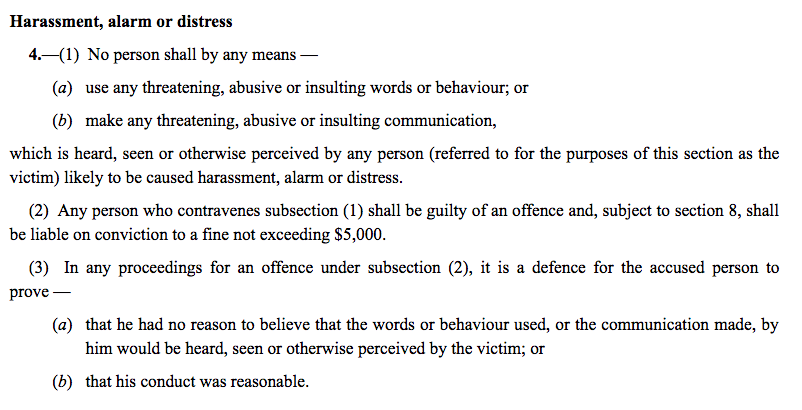 Screenshot via Singapore Statutes Online
Screenshot via Singapore Statutes Online
"Harassment, alarm or distress
4.—(1) No person shall by any means —
(a) use any threatening, abusive or insulting words or behaviour; or
(b) make any threatening, abusive or insulting communication,which is heard, seen or otherwise perceived by any person (referred to for the purposes of this section as the victim) likely to be caused harassment, alarm or distress.
(2) Any person who contravenes subsection (1) shall be guilty of an offence and, subject to section 8, shall be liable on conviction to a fine not exceeding $5,000.
(3) In any proceedings for an offence under subsection (2), it is a defence for the accused person to prove —
(a) that he had no reason to believe that the words or behaviour used, or the communication made, by him would be heard, seen or otherwise perceived by the victim; or
(b) that his conduct was reasonable."
Here are unrelated articles you should check out next:
You need to get with the times, both for your bank account and your life
These are some of the most popular ways Singaporeans get scammed of their money
Top image adapted from video.
If you like what you read, follow us on Facebook, Instagram, Twitter and Telegram to get the latest updates.
